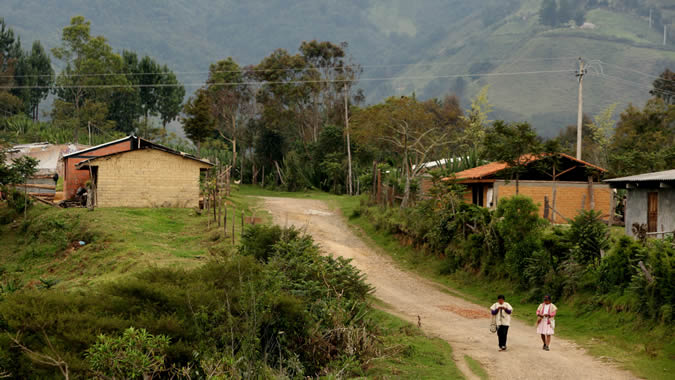ECLAC Analyzes Social Protection and Access to Public Goods and Services in Colombia’s Rural Areas
Topic(s)
The research, done by ECLAC’s Office in Colombia, proposes recommendations for closing the gaps between the countryside and the city.

Two new documents by the Economic Commission for Latin America and the Caribbean (ECLAC) identify the main gaps in social protection and access to public goods and services in Colombia’s rural areas and make recommendations to help close them.
The studies were prepared by ECLAC’s Office in Colombia in the framework of a technical cooperation agreement with the National Department of Planning as a contribution to the Mission for the Transformation of the Countryside, a government initiative that seeks to overcome the limitations that persist in rural areas and to define public policies for that sector with a view to the next 20 years.
The document Social Protection of Colombia’s Rural Population: A Proposal from the Perspective of Families and Their Needs (only available in Spanish) analyzes the main gaps existing in the protection of rural inhabitants and replicates some exercises devised for Latin America by international organizations, including ECLAC, to characterize rural households in a more detailed way, according to their family, age and occupation structures.
The results demonstrate a significant urban-rural gap in social protection and show that, despite recent improvements, direct transfers from the State have not managed to reduce inequalities nor have they adequately reached rural homes.
This situation is reinforced by the characteristics of the labor market in the Colombian countryside, where the agricultural sector represents 51% of total employment and where there is a high percentage of self-employed people (50%) and with low educational levels (56%). In addition, the wage income of rural workers is below that of the urban sector, and furthermore there is lower participation of women in the labor market.
In light of this, the report proposes policies to protect family income, boost labor formalization, implement more flexible instruments to access formal social security, underline the importance of care as a social good, and guarantee income for older people.
The second study, entitled Social Public Goods and Services in Colombia’s Rural Areas: Gaps and Public Policies (only available in Spanish), identifies that the greatest gaps in access to social public goods and services between the countryside and urban areas are found in habitat (housing and domicile-related services), while in education and health they are significant but smaller and have shown progressive reductions in recent decades.
This report proposes to advance towards the inclusion of rural residents and territories with clear aims and public rules, as well as with institutional arrangements that favor this, and to introduce innovations through flexible models and differentiated paths of social protection, adapted to territorial conditions and diverse populations.
According to the document, closing basic gaps would have an additional cost in annual public investment of 0.4% of GDP during the period 2015-2020, with progressive increases to reach 0.54% of GDP in 2030-2035. Along with that, the report proposes introducing reforms to the main sources of financing so its allocation may be even more progressive, depending on the territories’ levels of rurality and poverty.
Related content
Subregional headquarter(s) and office(s)
Type
Country(ies)
-
Colombia
Related link(s)
Related project(s)
Contact
Public Information Unit
- prensa@cepal.org
- (56 2) 2210 2040
